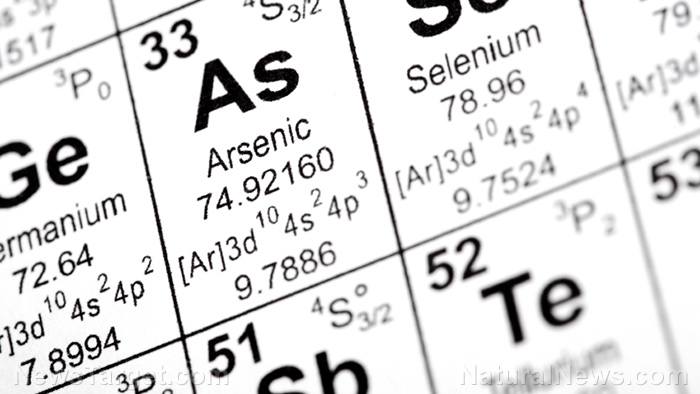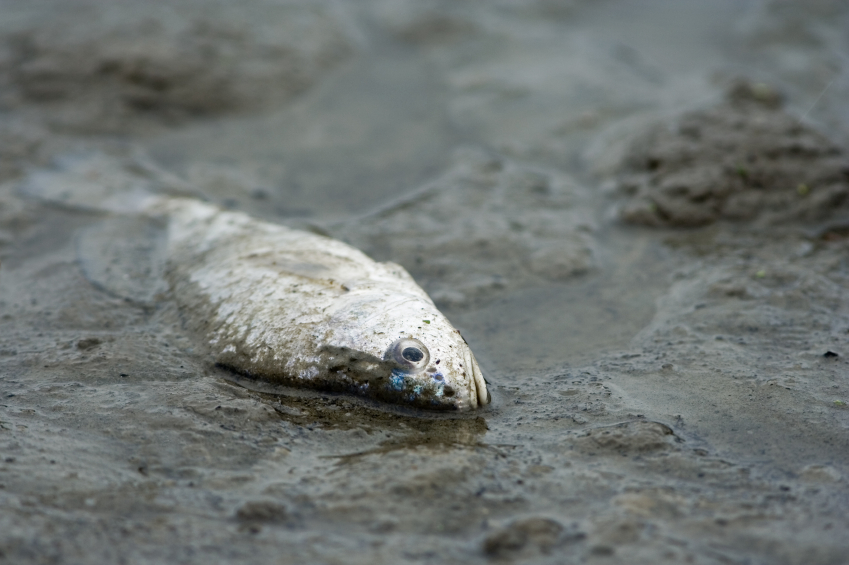Trifloxystrobin – toxicity, side effects, diseases and environmental impacts
11/11/2017 / By Earl Garcia

Trifloxystrobin is classified as a highly toxic fungicide that is primarily used in mitigating fungal growth in a wide array of crops. A pesticide fact sheet released by the U.S. Environmental Protection Agency explains that the fungicide works by mitigating spore germination and mycelial growth in a plethora of fungal pathogens within the Ascomycete, Deuteromycete, Basidiomycete and Oomycete classes. According to the data sheet, the fungicide is highly effective against grape and cucurbit powdery mildew, peanut leaf spot, apple scab and brown patch of turfgrasses.
List of known side effects
Trifloxystrobin exposure is notoriously associated with the onset of reproductive and developmental toxicity, neurotoxicity and acute toxicity. Likewise, the chemical is known to trigger respiratory tract irritation, altered lung functions and pneumoconiosis. The toxic fungicide is also shown to cause severe skin irritation characterized by inflammation, wounds and abrasions. Chronic eye irritation may also occur following a direct contact.
An entry posted on the Fluoride Action Network website shows that high level exposure to the hazardous fungicide is known to negatively impact various digestive organs such as the liver, pancreas and spleen. Likewise, the article stresses that trifloxystrobin may lead to body weight decline and bone problems. The toxic fungicide is also found to affect kidney function and compromise the health of mesenteric lymph nodes, pituitary glands and the thymus.
Aside from being a health risk, the Pesticide Action Network North America also classifies the dangerous chemical as a water pollutant, which greatly impacts the aquatic ecosystem and its animals.
Body systems affected by trifloxystrobin
The toxic fungicide is particularly detrimental to the respiratory system’s overall health. The hazardous chemical is also known to negatively impact both eye and skin health. Trifloxystrobin exposure may affect various digestive organs too. Likewise, the poisonous fungicide is found to compromise the health of the kidneys, the endocrine glands, the bones and the lymph nodes. The dangerous chemical is also associated with the onset of reproductive health issues.
Items that can contain trifloxystrobin
Trifloxystrobin is a widely used fungicide on various crops including wheat, grapes and apples as well as pears, legumes and nuts. Likewise, the toxic chemical is used on poultry, livestock and vegetables.
How to avoid trifloxystrobin
A safety data sheet recommends installing general and local exhaust to prevent fungicide contamination in the workplace. Likewise, the safety guidelines call for the use of dust- and mist-filtering respirators to avoid inhalation. The entry also suggests using chemical-resistant gloves and wearing long-sleeved shirts and pants to prevent direct skin contact. Moreover, it is advisable to wear splash-proof in order to avoid face and eye contact.
The safety guidelines also recommend that people who inhaled toxic fumes be taken to an area with fresh air. It is also advisable to call 911 or provide artificial respiration if the victim is not breathing. The safety data sheet also recommends washing the eyes and the skin with plenty of water for 15 to 20 minutes if direct contact occurred. According to the guidelines, contaminated clothing and contact lenses should be removed.
The guidelines also discourage people from inducing vomiting if the fungicide is ingested. Likewise, the safety data sheet cautions that people should not give anything by mouth if the victim falls unconscious. Instead, people are advised to sip a glass of water and contact a poison control center or a medical professional for health assessment.
Where to learn more
- Fungicide chemicals found to produce autism-like symptoms in animal studies, causing inflammation of the nervous system
- Chemically induced autism? Scientist discovers pesticides, fungicides lead to neurodegeneration in test subjects
- Exposure to common fungicide causes neurological problems across four generations
- Oranges and lemons are being treated with chemical fungicides and pesticides that cause cancer and thyroid problems
- Overused fungicides give rise to deadly, resistant fungus threatening humans and crops
Summary
Trifloxystrobin causes respiratory tract irritation, altered lung functions and pneumoconiosis.
Trifloxystrobin exposure leads to serve skin and eye irritation, weight loss and bone problems.
Trifloxystrobin is particularly detrimental to the respiratory system’s overall health.
Trifloxystrobin negatively impacts both eye and skin health and affects the liver, pancreas and spleen.
Trifloxystrobin exposure may affect the kidneys, the endocrine glands, the bones and the lymph nodes.
Sources include:
Tagged Under: Trifloxystrobin




















